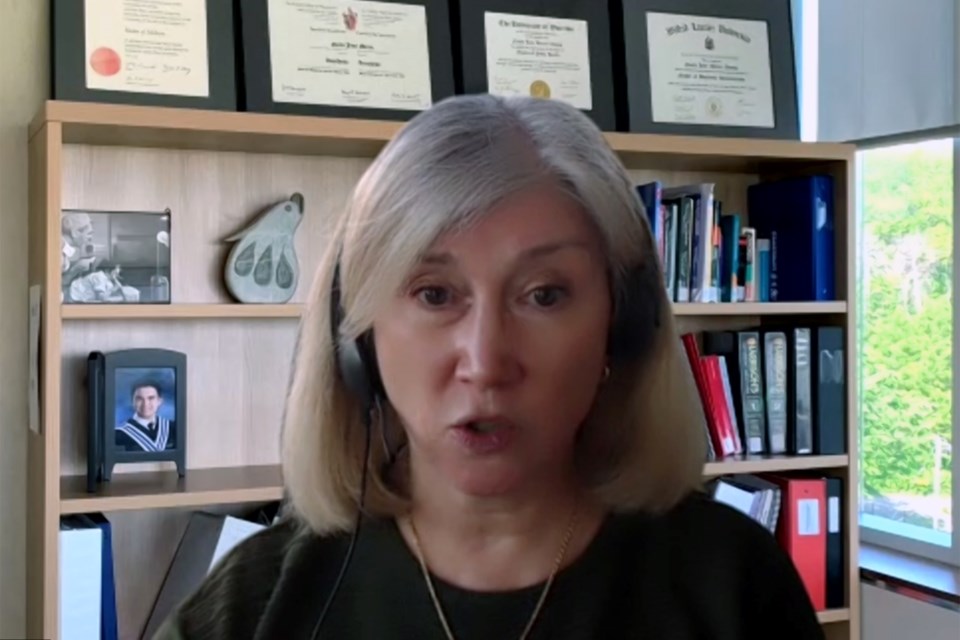The local medical officer of health says the majority of the spread of COVID-19 in our community has come from private social gatherings and that children are doing a great job following instructions on mask use and physical distancing.
The children who have been positively identified for COVID-19 have predominantly picked it up from parents and family, said Dr. Nicola Mercer, medical officer of Health for Wellington-Dufferin-Guelph at the agency’s monthly meeting held on Wednesday by video conference.
“They are coming into the schools and we are finding the cases,” said Mercer. “The classrooms are being dismissed and there is no evidence of transmission. We have really good data to show that predominantly, for the most part, children in schools are not giving it to other children in schools.”
Mercer credits the hard work teachers have put into instructing proper mask-wearing and physical distancing rules to the children.
“They are there in classrooms with other children, they are wearing their masks — they are really good at wearing their masks, much better than we are — and they are going outdoors and playing without their masks on and they are coming back in,” said Mercer. “As adults, we can do this, we just have to look at our children and be a lot more like them in terms of being careful.”
Mercer said Public Health has taken a close look at local cases and found that at least 60 per cent of them came as a result of private indoor social gatherings.
“People are going to dinner, they are going to barbecues and they are going out to (parties to socialize) — indoor environments locally — and that is the predominant number one thing if people would just stop pause doing that,” she said.
Mercer noted there are cases that have been attributed to travel or workplace spread, but in those cases Public Health have put measures in place through case and contact management.
Mercer said WDG Public Health is looking into a new recommendation made Tuesday from the chief public health officer of Canada that people wear three-layer cloth masks.
“We recommend and have been recommending up until yesterday the two-ply masks. We are currently investigating the requirement for three-ply masks,” said Mercer. “We certainly want to see the research that provides the evidence that supports three-ply masks.”
Single-ply masks should not be worn, said Mercer.
“They are often jewelled or have fancy designs and are often produced for women, what I call evening masks,” she said.
Mercer also said she does not recommend single-ply pull-up bandana-style face coverings or plastic face shields.
“It’s a very small clear plastic piece that sits on the chin in front of the mouth, those are absolutely not to be worn. They provide no protection for the wearer and they provide no protection for the people around them,” she said.
She also warned against another kind of mask on the market.
“Masks with exhalation valves are also not appropriate face coverings because it allows the wearer to breathe out through the mask and does not protect others in the environment surrounding them,” she said.
Mercer said there is no change in recommendations about the wearing of medical masks, but did note that they are in short supply and Public Health is not encouraging non-healthcare providers to source medical masks.
Most paper masks available in stores that appear similar to medical masks are not the same as medical masks, noted Mercer.
“Whether they have been designed or built to the same specification, I certainly cannot say. Many of them are very clearly labelled ‘this is not a medical mask’ when you buy them at a pharmacy,” said Mercer.
She noted that teachers in Ontario are supplied medical masks, while most children wear cloth masks.
